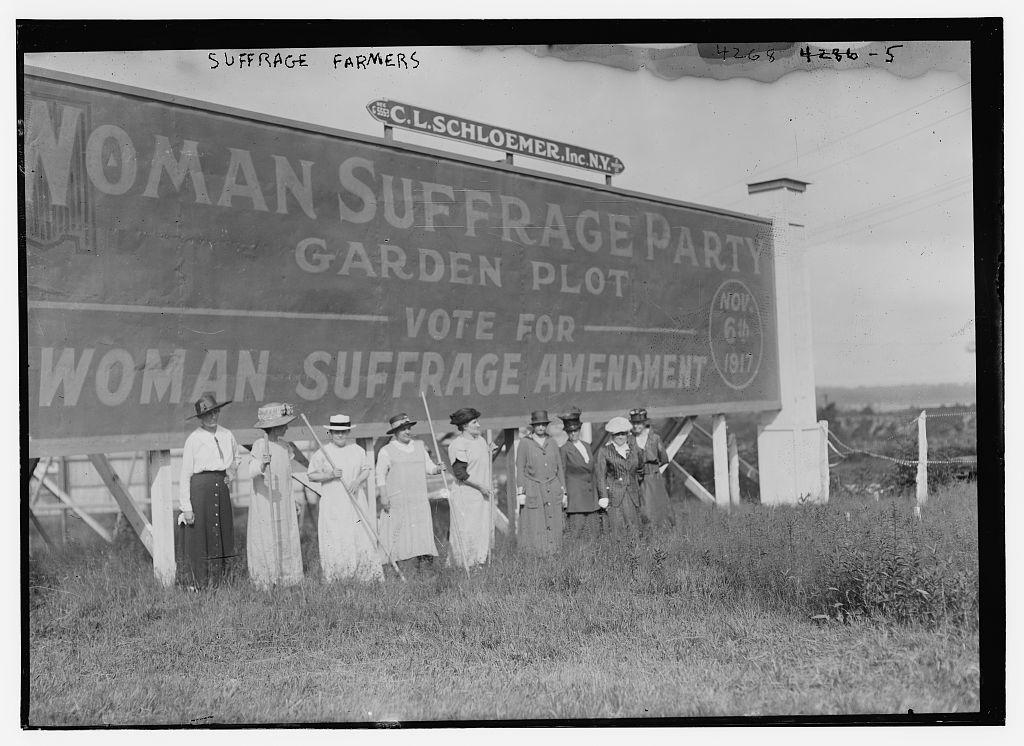There never will be complete equality until women themselves help to make laws and elect lawmakers.
Susan B. Anthony
Farmers for Suffrage, Library of Congress.
Working Women in the Suffrage Movement
Since the beginning of the women’s rights movement, women who devoted their lives to reform often were middle and upper class women. Women who worked to support themselves and their families had less time and funds to devote to social movements.
In the late nineteenth and early twentieth centuries, however, working women began supporting suffrage in greater numbers. They joined labor unions, held strikes for higher pay, and protested for better working conditions. Working women started seeing the vote as a way to gain more political power to further these causes.
Harriot Stanton Blatch, daughter of suffrage leader Elizabeth Cady Stanton, was among the first suffragists to recruit working women to support suffrage. She started collaborating with the Women’s Trade Union League, founded in 1905, to help women form unions and advocate for labor reforms. In 1907, she founded the Equality League of Self-Supporting Women (later called the Women’s Political Union) to attract working women to the suffrage movement. Blatch also wanted to integrate the more aggressive, militant tactics of labor activists—like parades through city streets and speakers on street corners—into the suffrage strategies to attract more publicity. Working women and their experience with the tactics of labor activists proved vital to winning the vote.
By Allison Lange, Ph.D.
Fall 2015
Essential Questions
- How did the rise of the labor movement influence the suffrage movement?
- What role did working women play in the movement during its final decades?
- How did that role contrast with earlier decades?
- Where did the labor and suffrage movements intersect?




PBS.
For his work on pro bono cases, Attorney Louis Brandeis was known as “the People’s Attorney.” Brandeis defended Oregon state law, which set a ten hour maximum a woman could work in a day at a “mechanical establishment, or factory, or laundry.” Curt Muller was fined for working his female employees more than ten hours a day, which he appealed to the Oregon Supreme Court. In this case, Brandeis used sociological data and legal argument to address whether excessive labor led to ill health. This was the first time a lawyer had used sociological data to help make their case and would serve as a model for future cases using non-legal data. The case went to the Supreme Court and was decided in favor of the Oregon state law.